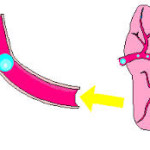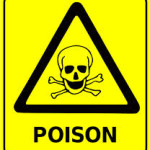Ever been to the morgue?
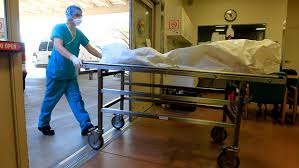 No?
No?
Well, like most people, you probably never think of the morgue except during shows like CSI, Bones or Hawaii 5-0.
But the popularity of forensic TV series is social proof that you’re interested in finding out just what goes on behind the autopsy suite’s closed door.
The word autopsy means ‘to examine for yourself’. It’s a medical procedure that sounds simple in principle – taking a look at the outside and inside of a cadaver to establish the cause of death. In practice, a post mortem examination can be highly complicated and time consuming; employing leading-edge scientific expertise.
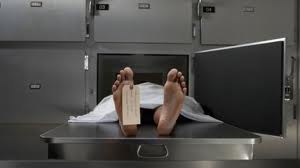 There’s three types of PM’s. A hospital autopsy is a non-legal process where the cause of death is known, but the caring physician wants to confirm a specific issue – such as a cancer tumor. A routine autopsy is conducted when the cause of death is not known, but foul play is not suspected. Then there’s a forensic autopsy – the one that’s going to be torn apart in a murder trial.
There’s three types of PM’s. A hospital autopsy is a non-legal process where the cause of death is known, but the caring physician wants to confirm a specific issue – such as a cancer tumor. A routine autopsy is conducted when the cause of death is not known, but foul play is not suspected. Then there’s a forensic autopsy – the one that’s going to be torn apart in a murder trial.
All autopsies follow a standard protocol. It’s the nature of the investigation that determines just how in-depth the procedure gets. The deceased arrives at the morgue and is cataloged with personal details and a registration number. Yes, they really do use toe-tags. The body is then placed in a refrigeration unit and waits its turn for examination. In a busy morgue this can take several days.
Usually two people conduct the autopsy. The pathologist, or medical doctor who is trained in the study of death and disease, is assisted by the Deiner (German word for helper). Often there’s observers present; police officers, students, or technicians who come and go. The length of time quite varies – fifteen minutes to confirm a tumor, two hours routinely, and up to eight for a complicated forensic ordeal.
 External observation can take a good portion of time. The body is removed from its shipping shroud, stripped, photographed, X-Rayed, weighed, measured, and identifiers such as race, age, hair and eye color, markings, abnormalities, as well as evidence of trauma or medical intervention is recorded. In homicide cases, the bulk of the evidence can be recovered in the external exam – clothing perforations, gunshot residue, lacerations, abrasions, hair, fibre, DNA, chemical contamination, or foreign objects. The observations are recorded on notes, diagrams, photos, and verbal dictations.
External observation can take a good portion of time. The body is removed from its shipping shroud, stripped, photographed, X-Rayed, weighed, measured, and identifiers such as race, age, hair and eye color, markings, abnormalities, as well as evidence of trauma or medical intervention is recorded. In homicide cases, the bulk of the evidence can be recovered in the external exam – clothing perforations, gunshot residue, lacerations, abrasions, hair, fibre, DNA, chemical contamination, or foreign objects. The observations are recorded on notes, diagrams, photos, and verbal dictations.
The corpse is placed supine, on its back, on the examining table which is an angled stainless steel tray draining fluids to a disposal sink. A plastic block is placed under the back to elevate the chest and recline the head and arms, making internal operations practical. A Y-incision is sliced from the tip of each shoulder, horizontally to the center of the chest, then vertically down to the pubic area. The skin is scalpeled back in a butterfly pattern accessing the thorax and abdomen, then the ribcage is snipped loose, exposing the upper and lower organs.
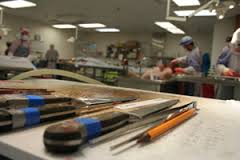 The major ones are removed, weighed, and cross-sectioned – lungs, heart, liver, kidneys, spleen, stomach, and intestines. Tissue sections are exscinded and fluids are extracted – blood, urine, vitreous humor, and digestive contents. These can be of immediate visual interest, or may tell later tales in toxicology and microscopic processing.
The major ones are removed, weighed, and cross-sectioned – lungs, heart, liver, kidneys, spleen, stomach, and intestines. Tissue sections are exscinded and fluids are extracted – blood, urine, vitreous humor, and digestive contents. These can be of immediate visual interest, or may tell later tales in toxicology and microscopic processing.
Cranial examination is the part that most newbies find difficult. The neck is now propped to elevate the head and the scalp is cut from ear to ear, peeled over the face and down the neck, then the skull cap is severed with a vibrating saw. The brain extracts easily and is often preserved in formalin to gel for later sectioning.
 Completion involves returning the organs to the central cavity and sewing-up the incisions before releasing the body to a funeral home. Tissue and liquids are retained for histology and toxicology. In forensic cases, exhibits such as bullets, trace evidence, DNA standards, and clothing are transferred to the crime lab.
Completion involves returning the organs to the central cavity and sewing-up the incisions before releasing the body to a funeral home. Tissue and liquids are retained for histology and toxicology. In forensic cases, exhibits such as bullets, trace evidence, DNA standards, and clothing are transferred to the crime lab.
Often the cause of death is conclusive at autopsy. Occasionally nothing is known until the lab results come in. And sometimes… it’s never determined just why the subject died.
Our scientific understanding of life and death is extensive, but it’s far from perfect.






